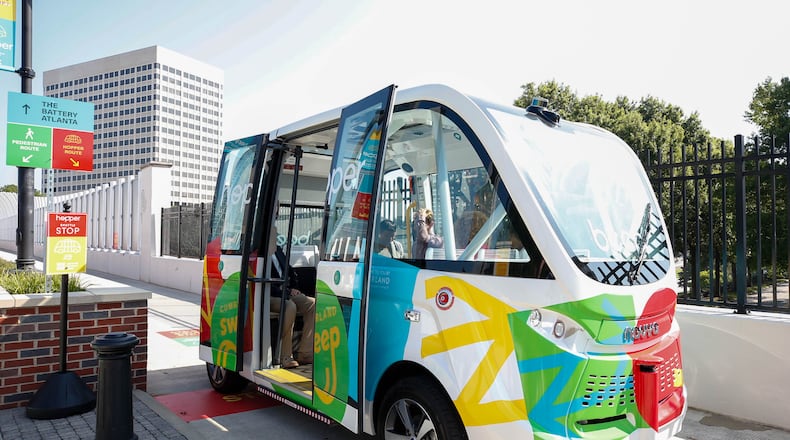Atlanta Mayor Andre Dickens made headlines last week after an interview where he moved further away from the long-standing idea of installing light rail along the city’s Beltline.
As he continues to dance around his support for the project — which is scheduled to begin with the eastside streetcar extension — the first-term mayor said he isn’t ruling out any alternatives.
Dickens told Atlanta News First that mass transit along the 22-mile trail system probably won’t look like what people think.
“We are still looking at how to make sure that we can fully vet this process of getting transportation around the Beltline,” he said. “So we have to think is it going to be rail? Is it going to be autonomous vehicles like pods? Is it going to be a bus rapid transit?
“People have this notion that we’re talking about putting heavy rail around the Beltline — that’s not the case,” he said.
It’s not surprising to hear Dickens, a tech guru who has an engineering degree from Georgia Institute of Technology, suggest a more futuristic mode of transportation.
And many Atlanta Brave’s fans may already be accustomed to self-driving shuttles if they are traveling along the Cumberland Sweep in Cobb County. A free, autonomous shuttle ran from July 2023 through March of this year but has since paused service.
Our colleague Taylor Croft previously reported that officials have had trouble securing funding for the shuttle dubbed the “Cumberland Hopper,” and the proposed multi-use path project it connects to.
Dickens also has big ideas for his recently announced MARTA infill stations that are aimed at connecting areas of Atlanta that are currently underserved by the city’s mass transit system. The mayor announced earlier this month that he plans to build new stations at Murphy Crossing, Krog Street/Hulsey Yard, Joseph E. Boone and Armour Yards.
Those, too, he said, won’t look like the MARTA stations of today.
“How Atlanta has done stations in the past is the past,” he said. “Moving forward, you can actually build a station that has all the amenities already in it from retail to dry cleaning, to daycare, to apartments, etc.
“So when you build it that way, you’re not just building rail, you’re also building a community at the same time,” Dickens said.
This comment may give us some insight into the biggest looming question: how is the city going to pay for four new MARTA stations? Dickens said integrating transit with residential amenities may open the door for private-public partnerships.
---
Atlanta’s residents in Old Adamsville may begin to notice more and more streetlights along roadways and sidewalks in their neighborhoods.
Last week, Atlanta launched the newest phase of its “Light Up the Night” partnership with Georgia Power to install tens of thousands of streetlights as a way to hopefully curb numerous public safety issues. Dickens said research has shown that areas of the city that weren’t as well lit were plagued by higher rates of car crashes, pedestrian-involved accidents and crime.
Over the past two years, the city along with Georgia Power have installed or repaired 18,000 streetlights and, last week, Dickens announced a new phase of 20,000 additional installations and upgrades.
Dickens said the city had the third highest crime-rate reduction in the nation last year, and “I think that a lot of that has to do with being wired,” he said at the Old Adamsville Recreation Center last week. “The light has added value to our lives and that is something that’s significant.”
---
Got tips, tricks or just want to say hello? Email me at riley.bunch@ajc.com.
Credit: Miguel Martinez
Credit: Miguel Martinez
About the Author
Keep Reading
The Latest
Featured





